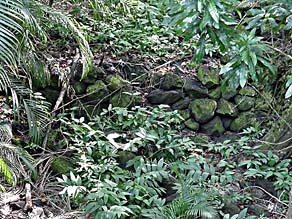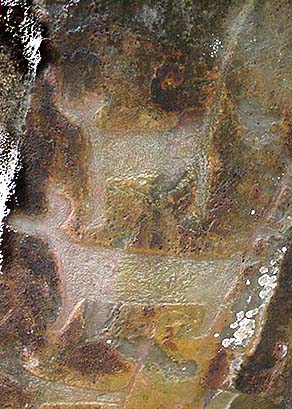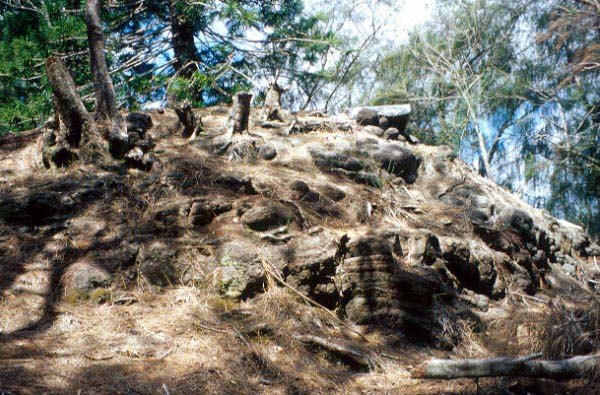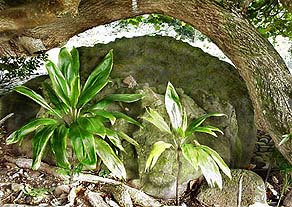 |
 |
 |
|||||||||||||||||||||
|
|
|
|
|
|
|
|
|
||||||||||||||||
|
|
|||||||||||||||||||||||
| |
|
|
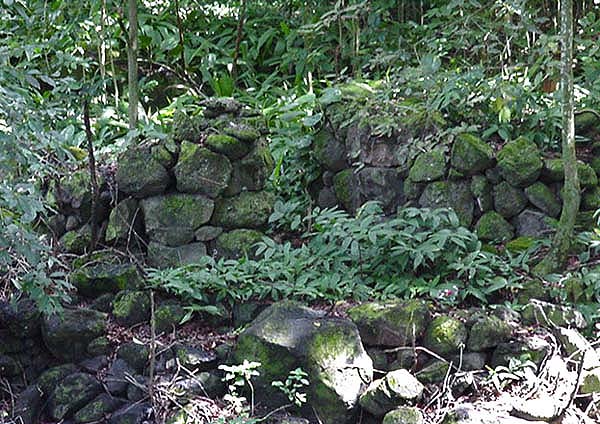
|
|
Nu‘uanu is mentioned in the earliest legends, as Puakea has told us. Aside from the gods who were in residence here, who were the people? As in other parts of the islands, these ancients include the menehune and other strange creatures referred to as the ‘e‘epa. Like the menehune, the ‘e‘epa are generally described as being short in stature ("imps," one source says; "gnomes," according to another). These creatures were placed there by the gods to guard legendary beings described in the next page. But there are traditions and landscapes associated with them here.
|
||
|
|
||
|
The area most widely associated with the strange ancient inhabitants is Waolani, a small separated valley in upper Nu‘uanu. Robert Nui (n.d.) refers to Waolani as "the famed resort of the ‘e‘epa people." Kamakau (1993) similarly remarks that the ridges above Waolani were "where the ‘e‘epa people are said to have lived and most of the people of strange powers who lived at Waolani." McAllister (1933) wrote that it was in the vicinity of Waolani "that the menehunes came to the assistance of Kekupua in the building of a koa canoe for Kakai, chief of Wahiawa, that his wife might voyage to Kahiki in search of a lost brother."
|
|
|
||
|
|
| The Pohaku-a-UmeUme is a famous stone in Waolani associated with these ancient peoples. Its legends are told in the Footprints chapter. But this stone also has historical significance. Here is a story told by Mrs. Anne Peleioholani Taylor, recorded in 1952 (Sterling & Summers, 1978: 303):
|
|
|
"The stone was used to test the powers of those who would be umeume experts. "The stone had powers connected with those of the lineage of the descendents of Oahu's king, Kakuhihewa. The stone had the magic ability to detect a true descendent of Kakuhihewa. When a umeume graduate tried to tilt the stone, he was unable to do so unless he was a descendant of Kakuhihewa. "Pohaku-Aumeume was the place where any child of the Kakuhihewa line had its naval cut. It was more important that the mother have the blood of Kakuhihewa than the father. The magic powers of the stone were called upon in case there was a dispute over the name to be given the child or who was to rear the child. "If the father's people wanted to name and rear the child and the mother's people wanted to name it for one of their ancestors, then the stone settled the argument."
|
|
"The priest of Waolani Heiau acted as judge and arbitrator. He held the child while the decision was made. The mother and her family would line up on one side of Pohaku-Aumeume. The father and his family lined up on the other side. Each family selected a person to do the testing. Often the mother decided to test the stone herself. If the mother were not in good health, she might ask her mother to be the tester. "Whichever side was able to tilt or move the stone won the contest and the baby. He would select a name 'suggested by the stone,' from either family and award the child to whom he thought best."
|
The Pokahu-a-Umeume
|
|
|
|
|
These are some of the many tales and wondrous sites of ancient Nu‘uanu. Go to the next page to learn more about Nu‘uanu's legendary setting.
|
||
|
|
||
| |
| |
|
|

|
| Nu‘uanu Home | Map Library | Site Map | Hawaiian Islands Home | Pacific Worlds Home |
|
|
|||
| Copyright 2003 Pacific Worlds & Associates • Usage Policy • Webmaster |
|||
